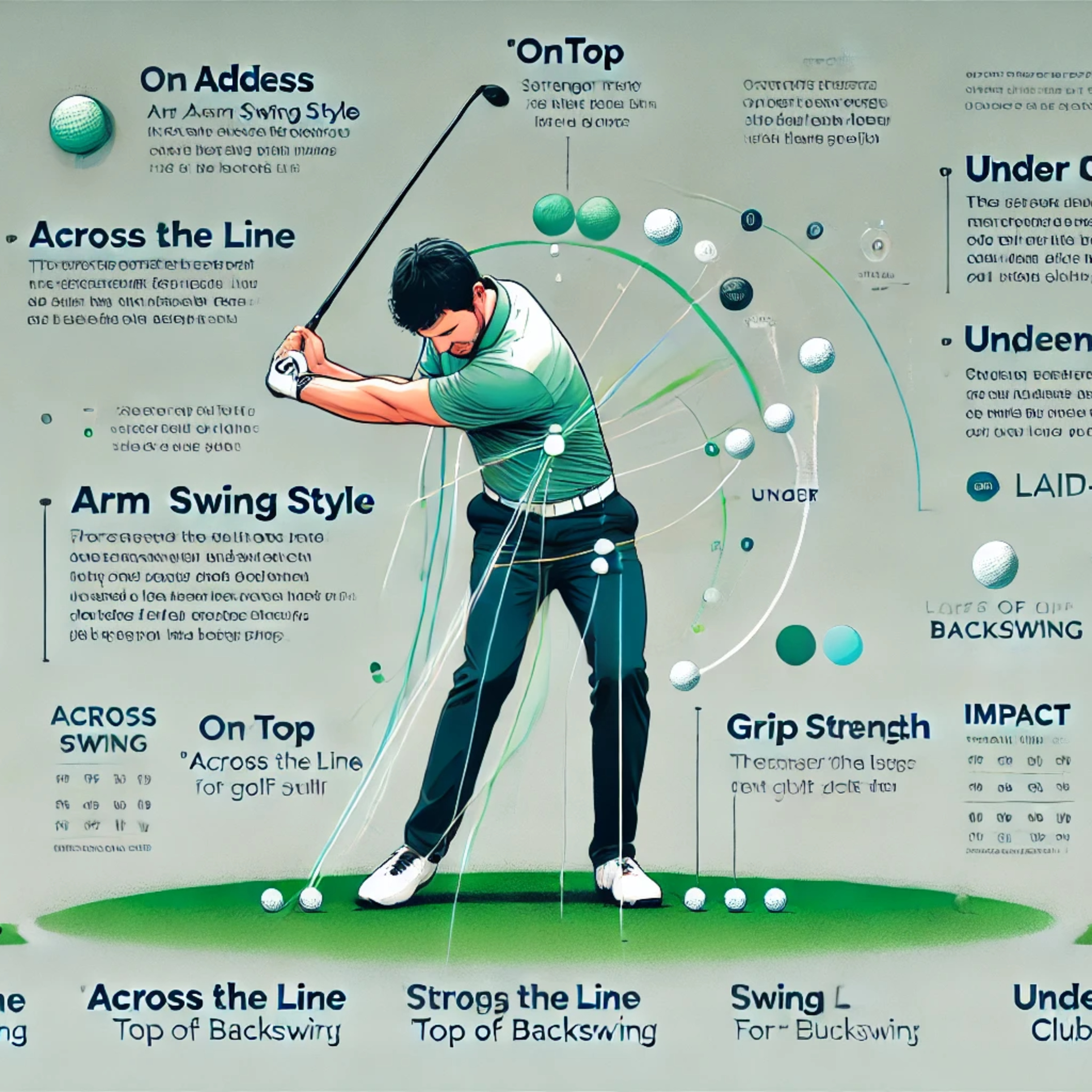#73 What is “across the line” and “laid off”
- Author
- Golf247.eu
- Published
- Fri 13 Dec 2024
- Episode Link
- https://podcasters.spotify.com/pod/show/puttin-pro/episodes/73-What-is-across-the-line-and-laid-off-e2s7rkh
The podcast discusses the use of trackers and indicators in the golf swing analysis software Sportsbox. Trackers provide continuous data throughout the swing, while indicators offer specific values at key points (e.g., address position, top, impact). Various parameters such as clubhead and hand movement, swing direction, and shaft angle are examined to evaluate club position ("Across the Line" and "Laid Off"). Examples of professional golfers illustrate different swing types and their effects on these parameters. Finally, the influence of posture and arm movement on club position is explained.
Impact of Swing Mechanics on Club Position:
The sources provide a detailed analysis of how different swing mechanics influence club position, highlighting several key factors:
Arm Swing Style: A golfer's arm swing style, or the way their arms move during the swing, significantly impacts club position. There are two main arm swing styles:
OnTop Golfers: These golfers move their arms more behind the chest, leading to a steeper shaft angle and a typically more open clubface at impact. Examples include Rory McIlroy and Jack Nicklaus.
Under Golfers: These golfers move their arms more in front of the chest, resulting in a flatter shaft angle and a generally more closed clubface at impact. Examples include Jon Rahm and Adam Scott.
Grip Strength: The strength of the grip, particularly in the left hand, affects club position. A stronger left-hand grip (more wrist extension) promotes greater wrist flexion during the swing, leading to a more open clubface. Conversely, a weaker left-hand grip (less wrist extension) results in a flatter clubface position.
Shoulder Flexibility: Flexibility, especially in the trail shoulder, impacts club position by influencing the swing's range of motion. Golfers with greater flexibility tend to swing the club further around the body, which can lead to an "Across the Line" position.
Swing Length: The length of the swing also affects club position. Shorter swings may not allow the club enough time to reach the desired position, potentially leading to a "Laid-Off" position.
Torso Movement: The torso's movement during the swing is critical for proper club positioning. Early torso rotation or loss of forward bend can prevent the arms from freely swinging across the chest, impacting club position.
The sources emphasize that the ideal club position varies from golfer to golfer and depends on a combination of these factors. It is important to respect each golfer's unique swing style and find a club position that aligns with their physical attributes and movement patterns. Examples of professional golfers are used to illustrate the range of club positions and how even slight differences in swing mechanics can impact club positioning.
